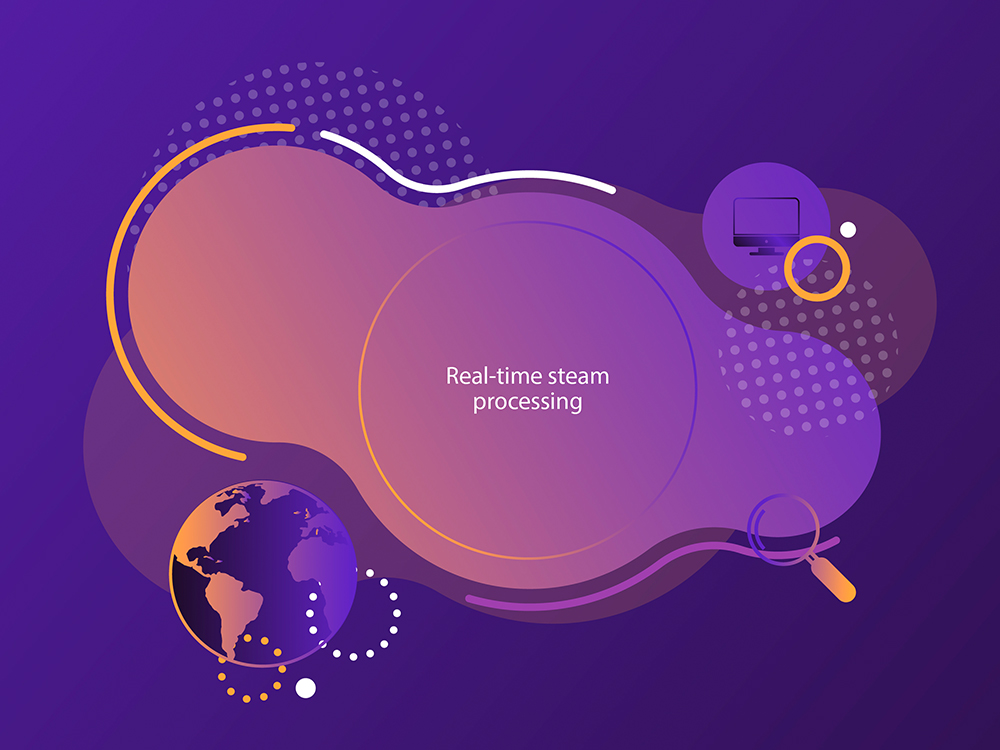In today’s data-driven world, organizations are constantly striving to extract valuable insights from vast amounts of data to gain a competitive edge. However, traditional data processing approaches often fall short when it comes to handling the velocity and volume of data generated in real-time. This is where real-time stream processing comes into play. By enabling immediate analysis of data streams, real-time stream processing empowers organizations to unlock valuable insights and make informed decisions in the ever-evolving business landscape.
The Power of Real-Time Stream Processing
Real-time stream processing offers numerous benefits and advantages that empower organizations to unlock the true potential of their data assets. Let’s explore the key benefits of leveraging real-time stream processing in big data analytics:
Immediate Action and Faster Decision-Making
One of the significant advantages of real-time stream processing is the ability to take immediate action and make faster decisions based on up-to-the-second insights. By analyzing data streams in real-time, organizations can detect patterns, trends, and anomalies as they occur, enabling timely interventions, proactive responses, and agile decision-making. This real-time responsiveness is crucial in time-critical scenarios where quick actions can lead to significant competitive advantages or risk mitigation.
Enhanced Data Accuracy and Quality
Real-time stream processing enables organizations to validate and cleanse data as it flows through the system, ensuring data accuracy and quality. By applying data validation rules, real-time stream processing systems can identify and discard erroneous or inconsistent data, improving the reliability of insights and analysis. Additionally, real-time data validation allows organizations to identify data quality issues promptly and take corrective measures, minimizing the impact of poor data on decision-making processes.
Continuous Insights and Monitoring
With real-time stream processing, organizations can have continuous access to insights and monitoring capabilities. Instead of relying on batch processing or periodic reports, real-time stream processing provides a continuous flow of insights, allowing organizations to monitor key metrics, detect changes, and respond in real-time. This enables proactive management, early detection of issues, and the ability to seize opportunities as they arise.
Scalability and Elasticity
Real-time stream processing systems are designed to handle high volumes of data and scale effortlessly to accommodate growing data streams. The distributed nature of these systems allows for horizontal scalability, where additional resources can be added seamlessly to handle increased workloads. This scalability ensures that organizations can process and analyze data streams of any size without compromising performance or responsiveness.
Real-Time Analytics and Predictive Capabilities
Real-time stream processing enables organizations to perform real-time analytics on data streams, allowing for immediate insights and predictions. By analyzing streaming data as it arrives, organizations can identify trends, detect anomalies, and make predictions in real-time. This real-time analytics capability empowers organizations to respond quickly to changing conditions, make data-driven decisions on the fly, and capitalize on emerging opportunities.
Operational Efficiency and Cost Savings
By leveraging real-time stream processing, organizations can improve operational efficiency and achieve cost savings. Real-time insights and monitoring enable proactive maintenance, optimized resource allocation, and streamlined processes. Organizations can identify inefficiencies, bottlenecks, or underutilized resources in real-time, leading to better resource management, reduced operational costs, and improved overall efficiency.
Competitive Advantage and Innovation
In today’s competitive landscape, the ability to harness real-time data and derive insights instantaneously provides a significant competitive advantage. Real-time stream processing enables organizations to respond quickly to market changes, customer demands, and emerging trends. It fosters a culture of data-driven decision-making and innovation, allowing organizations to stay ahead of the curve, drive innovation, and deliver exceptional products and services to customers.
Capabilities of Real-Time Stream Processing

Real-time stream processing offers a range of powerful features and capabilities that enable organizations to effectively analyze and derive insights from data streams. Let’s explore some of the key features:
Ingesting and Processing Data in Real Time
Real-time stream processing platforms excel at ingesting and processing data as it arrives, ensuring minimal latency and enabling immediate analysis. These platforms can handle high-speed data streams, processing and transforming data in real-time to provide timely insights.
Event-Driven Architecture
Real-time stream processing follows an event-driven architecture, where data processing is triggered by events or occurrences in the data stream. This approach allows organizations to react to events instantly, making decisions or taking actions based on real-time data.
Continuous Processing and Windowing
Real-time stream processing supports continuous processing, allowing organizations to perform analytics on data streams as they flow continuously. Additionally, windowing techniques enable the aggregation and analysis of data within specific time windows, providing a way to derive insights from data in smaller chunks.
Complex Event Processing
Complex Event Processing (CEP) is a crucial capability of real-time stream processing. It involves the detection and processing of complex patterns and sequences of events in real-time data streams. This capability enables organizations to identify meaningful events, correlations, and anomalies, leading to valuable insights.
Real-Time Analytics and Machine Learning
Real-time stream processing platforms often integrate with analytics and machine learning frameworks, allowing organizations to perform real-time analytics and apply machine learning algorithms on streaming data. This enables the extraction of real-time insights and the detection of patterns or anomalies as they occur.
Scalability and Elasticity
Scalability and elasticity are inherent features of real-time stream processing platforms. These platforms can handle large volumes of data and scale seamlessly to accommodate increasing data streams or spikes in demand. Elasticity ensures that resources are dynamically allocated, optimizing performance and responsiveness.
Fault Tolerance and Data Resilience
Real-time stream processing platforms are designed to be fault-tolerant, ensuring the resilience of data processing even in the presence of failures or disruptions. They incorporate mechanisms for data replication, backup, and recovery to ensure data integrity and continuity of operations.
Integration with Data Ecosystems
Real-time stream processing platforms integrate with existing data ecosystems, enabling seamless integration with various data sources, databases, data warehouses, and data lakes. This ensures that organizations can leverage their existing infrastructure and systems while incorporating real-time stream processing capabilities.
Support for Streaming Data Connectors and Protocols
Real-time stream processing platforms support a wide range of streaming data connectors and protocols, enabling the ingestion of data from diverse sources such as messaging systems, sensors, social media feeds, and IoT devices. These connectors facilitate the seamless flow of data into the processing pipeline.
Visualization and Monitoring Tools
Real-time stream processing platforms often provide visualization and monitoring tools that allow organizations to monitor the status, performance, and health of data streams and processing workflows. These tools provide real-time insights into the data processing pipeline, enabling organizations to identify bottlenecks or issues promptly.
Real-Life Applications of Stream Processing

Real-time stream processing has found widespread adoption across various industries, enabling organizations to derive valuable insights and make informed decisions in real-time. Let’s explore some real-life applications where real-time stream processing is revolutionizing data analytics:
1. Fraud Detection and Financial Services
In the financial sector, real-time stream processing is instrumental in detecting fraudulent activities and ensuring secure transactions. By analyzing streaming data from multiple sources, including transaction logs, user behavior, and external data feeds, organizations can identify suspicious patterns and take immediate action to prevent fraudulent transactions. Real-time stream processing enables continuous monitoring, anomaly detection, and risk scoring, helping financial institutions mitigate fraud and enhance security.
2. Internet of Things (IoT) and Smart Cities
The Internet of Things generates massive amounts of real-time data from sensors, devices, and machines. Real-time stream processing allows organizations to analyze IoT data streams in real-time, enabling proactive decision-making and optimizing operational efficiencies. In the context of smart cities, real-time stream processing helps monitor and manage various aspects, such as traffic flow, energy consumption, waste management, and emergency response systems. By leveraging real-time insights, cities can enhance sustainability, improve citizen services, and ensure effective resource allocation.
3. Supply Chain and Logistics
Real-time stream processing plays a vital role in optimizing supply chain and logistics operations. By analyzing streaming data from various sources, such as RFID tags, GPS trackers, and weather feeds, organizations can gain real-time visibility into their supply chain, track shipments, and identify potential bottlenecks or delays. Real-time insights enable proactive decision-making, route optimization, demand forecasting, and inventory management, leading to improved operational efficiency, reduced costs, and enhanced customer satisfaction.
4. Customer Experience and Personalization
Real-time stream processing empowers organizations to deliver personalized customer experiences in real-time. By analyzing customer interactions, browsing behavior, and social media feeds in real-time, organizations can gain insights into customer preferences and dynamically tailor offerings or recommendations. Real-time stream processing enables real-time segmentation, sentiment analysis, and targeted marketing campaigns, enhancing customer engagement, satisfaction, and loyalty.
5. Predictive Maintenance in Manufacturing
Real-time stream processing is instrumental in implementing predictive maintenance strategies in manufacturing industries. By analyzing real-time sensor data from machinery and equipment, organizations can detect anomalies, predict failures, and schedule maintenance activities proactively. Real-time insights enable organizations to minimize unplanned downtime, optimize maintenance schedules, and maximize equipment uptime, resulting in improved productivity and cost savings.
6. Healthcare and Patient Monitoring
Real-time stream processing has significant implications in healthcare, especially in patient monitoring and remote care. By analyzing real-time data from wearable devices, medical sensors, and electronic health records, healthcare providers can monitor patient vitals, detect abnormalities, and trigger immediate interventions when necessary. Real-time stream processing enables early diagnosis, proactive healthcare management, and improved patient outcomes.
7. Real-Time Advertising and Content Personalization
Real-time stream processing is transforming the advertising industry by enabling real-time bidding, ad targeting, and content personalization. By analyzing real-time user data, browsing behavior, and contextual information, organizations can deliver relevant ads and personalized content in real-time. Real-time stream processing enables dynamic ad placement, content recommendation engines, and campaign optimization, maximizing advertising effectiveness and driving revenue growth.
Identifying the Challenges of Real-Time Streaming
Real-time streaming has emerged as a critical technology in today’s data-driven world, enabling organizations to process and analyze data as it flows in real-time. However, like any other technology, real-time streaming also comes with its set of challenges that organizations must address to harness its full potential. In this section, we will explore the key challenges associated with real-time streaming and understand how organizations can overcome them to leverage this powerful technology effectively.
Dealing with the Velocity and Volume of Data
One of the primary challenges in big data analytics is managing the velocity and volume of data. With the proliferation of digital devices and the rise of IoT, organizations are facing an unprecedented influx of data streams that require processing in real-time. Traditional batch processing methods are no longer sufficient to handle the continuous flow of data, resulting in data bottlenecks and delays in analysis.
To overcome this challenge, organizations need a solution that can handle the high velocity and volume of data streams. Real-time stream processing enables data to be processed and analyzed as it arrives, eliminating the latency introduced by batch processing. This immediate analysis ensures that organizations can derive insights in real-time and respond quickly to emerging trends and opportunities.
Ensuring Data Accuracy and Quality
Another critical challenge in big data analytics is ensuring data accuracy and quality. Real-time data streams are susceptible to inconsistencies, anomalies, and errors, making it essential to validate and cleanse the data as it flows. Without proper mechanisms in place, organizations risk making decisions based on inaccurate or incomplete information, leading to unreliable insights and compromised decision-making processes.
To address this challenge, real-time stream processing provides capabilities for data validation and cleansing in real-time. By implementing data quality checks and cleansing algorithms within the processing pipeline, organizations can identify and address issues as the data streams are ingested. This ensures that the insights derived from the data are accurate, reliable, and trustworthy, enabling organizations to make informed decisions with confidence.
Enabling Real-Time Decision-Making
The need for real-time decision-making is a significant challenge in big data analytics. Traditional analytics approaches often rely on batch processing, which introduces latency between data ingestion and analysis. In today’s fast-paced business environment, the ability to make timely decisions based on the most up-to-date information is critical. Real-time stream processing enables organizations to analyze and act upon data streams as they arrive, empowering real-time decision-making.
Real-time stream processing allows organizations to continuously monitor data streams, detect patterns, and identify critical events in real-time. This capability enables organizations to respond immediately to changing conditions, make proactive decisions, and seize opportunities as they arise. By leveraging real-time insights, organizations can gain a competitive advantage by staying ahead of the curve and making informed decisions in the moment.
Scaling to Handle Data Volume
Scalability is a key challenge in big data analytics, especially when dealing with high data volumes. As data streams continue to grow, organizations must ensure that their processing systems can handle the increasing demands without sacrificing performance. Scalable stream processing solutions provide the flexibility to scale resources on-demand, allowing organizations to process and analyze data streams of any size efficiently.
Real-time stream processing platforms offer horizontal scalability, enabling organizations to add more computing resources as needed. This scalability ensures that organizations can handle the growing data volumes without experiencing performance degradation. By dynamically allocating resources based on the workload, organizations can optimize resource utilization and maintain optimal processing speeds, even during peak data flow periods.
Overcoming the Challenges

Real-time stream processing addresses the challenges faced in big data analytics by offering unique capabilities and features that enable organizations to thrive in the data-driven landscape.
Immediate Action with Real-Time Analytics
Real-time stream processing enables immediate action by providing real-time analytics capabilities. With the ability to analyze data streams as they arrive, organizations can detect patterns, anomalies, and trends in real-time. This empowers them to take immediate action, make instant decisions, and respond swiftly to emerging opportunities or critical events.
Continuous Insights for Enhanced Decision-Making
With real-time stream processing, organizations can continuously derive insights from data streams. By analyzing data as it flows, organizations gain a constant stream of information that keeps them informed about changing dynamics. Continuous insights enable organizations to make data-driven decisions based on the most up-to-date information, enhancing decision-making processes and fostering agility.
Enhanced Data Accuracy through Real-Time Validation
Real-time stream processing incorporates data validation mechanisms that ensure the accuracy and quality of the data. As data streams are ingested, the processing pipeline can perform real-time validation checks, cleansing the data from inconsistencies and errors. This ensures that the insights derived from the data are reliable and trustworthy, leading to more accurate decision-making and improved business outcomes.
Scalability for Handling Growing Data Volumes
Real-time stream processing platforms offer scalability to handle the growing data volumes. Organizations can scale resources on-demand, ensuring that their processing systems can accommodate high data volumes without sacrificing performance. This scalability enables organizations to process and analyze data streams of any size, providing the flexibility needed to adapt to changing data demands and maintain optimal processing speeds.
Conclusion
Real-time stream processing revolutionizes big data analytics by enabling immediate analysis of data streams. Don’t miss out on the opportunities that real-time processing offers. Embrace this transformative technology and unleash the true power of real-time insights in your big data analytics journey.
Click AI Data House to explore the full potential of real-time stream processing and revolutionize your big data analytics strategy.










